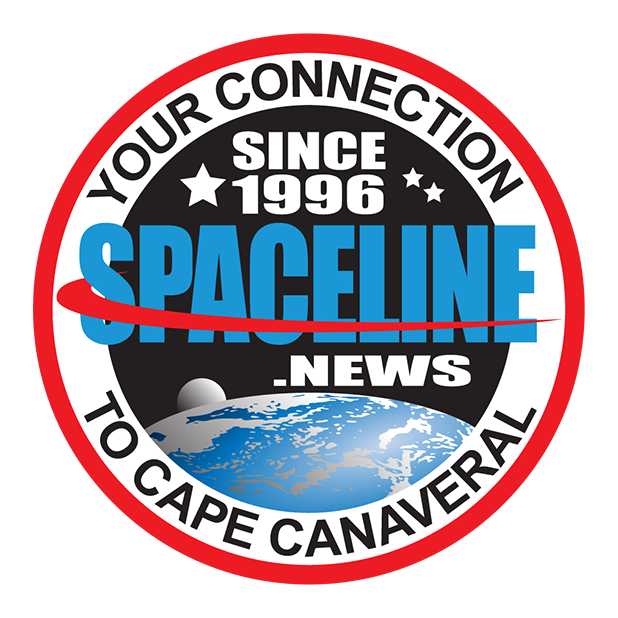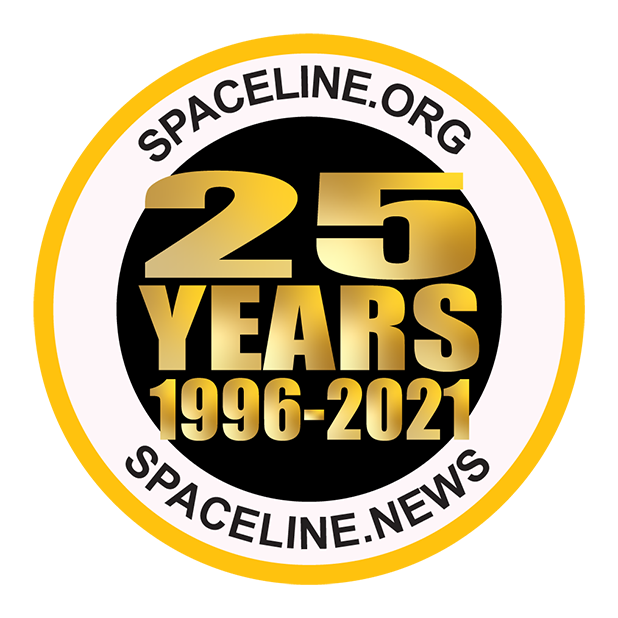
Falcon 9 Rocket On Launch Pad 40, File Photo Courtesy SpaceX
Falcon 9 Launch Postponed Indefinitely
February 24, 2018 | Reported by Cliff Lethbridge
Launch of a SpaceX Falcon 9 rocket previously scheduled for February 25 at 12:35 a.m. EST has been postponed indefinitely. The company in a statement via Twitter said, "Standing down from this weekend's launch attempt to conduct additional testing on the fairing's pressurization system. Once complete, and pending range availability, we will confirm a new targeted launch date." The rocket will be carrying the HISPASAT 30W-6 commercial communications satellite for Madrid-based Hispasat. Launch will be from Launch Pad 40 on Cape Canaveral Air Force Station.

Vice President Mike Pence Tours Delta IV Horizontal Integration Facility, Photo Courtesy NASA

Vice President Mike Pence Arrives At Shuttle Landing Facility, Photo Courtesy NASA
Vice President Pence Visits Kennedy Space Center
February 21, 2018 | Reported by Cliff Lethbridge
Vice President Mike Pence and his wife Karen have concluded their visit to the Kennedy Space Center. Mr. Pence arrived on Air Force Two at the Shuttle Landing Facility on Tuesday afternoon, and was given a tour of launch facilities on Cape Canaveral Air Force Station. He also attended a commercial spaceflight federal reception. On Wednesday, the Vice President chaired a meeting of the National Space Council held in the High Bay of the Space Station Processing Facility. The meeting lasted about two hours, and was just the second meeting of the Council since it was revived by the Trump Administration last year. The theme of the meeting was "Moon, Mars, and Worlds Beyond: Winning the Next Frontier" and included remarks from Mr. Pence as well as leaders in the civil, commercial and national security space sectors. Mr. Pence concluded his visit with a tour of the Kennedy Space Center. This was Mr. Pence's second visit to the Kennedy Space Center since becoming Vice President in January, 2017.

Falcon Heavy Launch View From Press Site, Photo Courtesy Liz Allen/Lloyd Behrendt
Falcon Heavy Nearly Flawless On Maiden Flight
February 6, 2018 | Reported by Cliff Lethbridge
SpaceX head Elon Musk gave this launch a 50-50 chance of success. In reality, today's maiden launch of a Falcon Heavy rocket was nearly a complete success. The Falcon Heavy was launched from Kennedy Space Center Launch Pad 39A at 3:45 p.m. EST. Launch was delayed 2 hours, 15 minutes to allow excessive high altitude winds to subside. The Falcon Heavy is comprised of three Falcon 9 first stage booster cores strapped together, with a total of 27 engines fired at liftoff. The two outside core boosters successfully landed at Cape Canaveral Air Force Station Landing Zone 1. In the only apparent flaw of the test flight, the center core booster hit the water and was destroyed, reportedly damaging the intended target landing barge.

Falcon Heavy Outside Two Boosters Approach Landing Zone 1, Video Capture Courtesy SpaceX
The Falcon Heavy can produce 5.13 million pounds of thrust at launch, making it the world's most powerful launch vehicle. Historically, the Falcon Heavy is second only to the mighty Saturn V in liftoff thrust. The Saturn V produced 7.5 million pounds of thrust at launch. The Falcon Heavy may eventually yield to NASA's massive Space Launch System (SLS) rocket in terms of total liftoff thrust. SLS is designed to have a liftoff thrust of over 8 million pounds.

Falcon Heavy Launch View From Launch Pad 39A, Photo Courtesy SpaceX
The Falcon Heavy rocket stands 229.6 feet tall with a total width of 39.9 feet. Fully fueled, the rocket has a total mass of 3.125 million pounds at launch. The rocket can carry a composite fairing or a Dragon capsule, depending on mission requirements. Like the Falcon 9 rocket, the Falcon Heavy first stage and second stage burn a combination of liquid oxygen and RP-1 (kerosene) fuel. With the capability of carrying a maximum 140,600 pounds of payload to Low Earth Orbit, the Falcon Heavy performance is far and above that of comparable launch vehicles. Payload capability to Low Earth Orbit of the Falcon Heavy is roughly three times greater than the Space Shuttle and Delta IV Heavy, and roughly four times greater than the Atlas V. The Falcon Heavy can also carry a maximum 58,860-pound payload to Geostationary Transfer Orbit, a maximum 37,040-pound payload to Mars or a maximum 7,720-pound payload to Pluto.

Falcon Heavy In Flight, Photo Courtesy Liz Allen/Lloyd Behrendt
Although today's launch represented a test flight only, the rocket carried what will likely become a famous payload ? a cherry red Tesla Roadster automobile. Seated in the convertible's driver's seat is a mannequin dressed in a SpaceX spacesuit. Nicknamed "Starman", the mannequin's left arm is poised on the car's window while its right hand is affixed to the steering wheel. A note reading "don't panic" is visible on the car's dashboard. The car only weighs about 3,000 pounds, far less than the Falcon Heavy's payload potential. It is, however, the first automobile in space and will ultimately be the fastest, achieving a maximum 24,600 m.p.h. on its way to a solar orbit at approximate Mars distance. Musk hopes the car will orbit the sun for "billions of years."

Falcon Heavy Tesla Roadster Payload Above Australia, Photo Courtesy SpaceX









